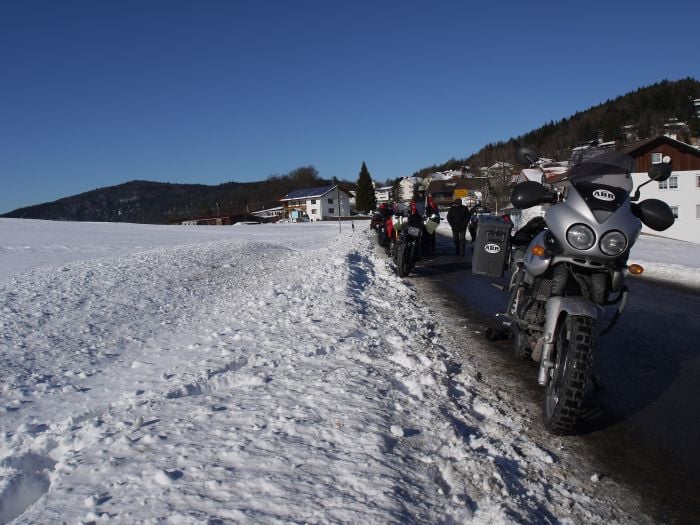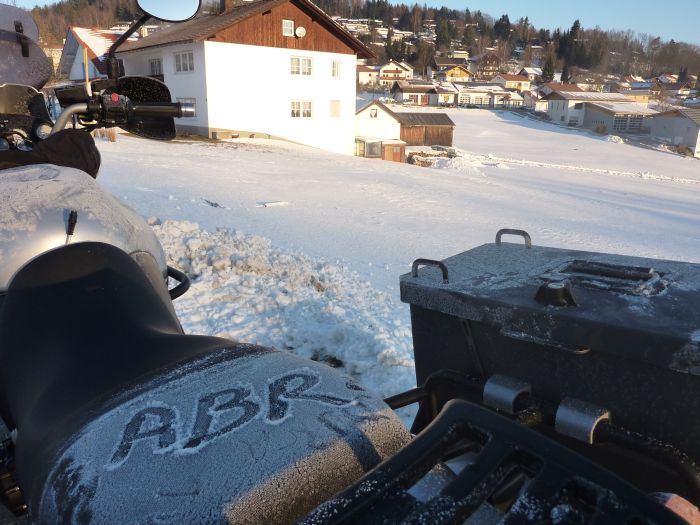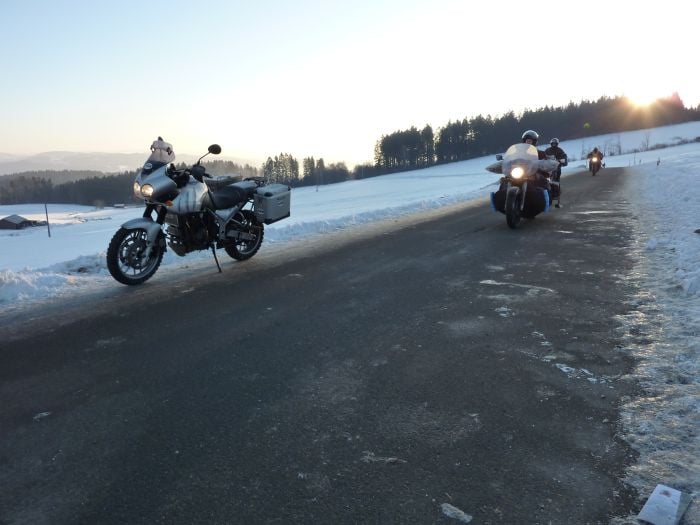As we move in to winter the nights are drawing in and the temperatures are starting to plummet. While this signals the end of the riding season for many, there are those who like to get out on two wheels whatever the weather, but doing so could be a dangerous endeavour if the risks are not properly understood.
When riding in the winter, aside from the unpredictable road conditions that ice and snow present, becoming cold in the saddle can not only be uncomfortable, but life threatening. It sounds like an over dramatic warning, but it’s not, it’s reality.
When exposed to low temperatures, as you might be when riding a motorcycle in the winter, you put yourself at risk of becoming extremely cold or developing hypothermia.
Cold, wet conditions are the biggest contributing factors to becoming extremely cold, conditions that you’re likely to experience when riding in the winter in the UK.
Keep in mind when riding that wind chill will drop the temperature massively. So you might think you’re able to handle the cold at 5C, but when you’re travelling at 60mph, this temperature will effectively be reduced to -3C, placing you in conditions that can lead to hypothermia.
What’s so bad about hypothermia then? Well, when your body temperature drops due to cold exposure, your extremities will become numb and slower to respond, making simple tasks such as pulling your clutch lever in, or braking, more difficult.
Not only this, but reaction times decrease and decision making abilities slow down – two crucial elements to riding safely. If your reaction times have decreased, it’s going to be harder to avoid that car that pulls out in front of you.
How to avoid hypothermia in the saddle
Dressing appropriately for the weather is the best way to prevent yourself from feeling the effects of cold weather. With this in mind, layer up with a technical base layer, a good quality insulated jacket and a motorcycle jacket that’s been designed to be worn in cold weather conditions. It sounds obvious, but also make sure you’ve closed all vent zips and you have no areas of skin exposed to the cold.
Heated grips will help keep the palm side of your fingers warm, but heated gloves are preferable as they warm the whole hand. Fitting hand guards to your bike will also decrease the wind chill factor on your digits, and I’d consider these essential on any touring bike.
When we’re sat on a motorcycle, we’re not doing anything to generate extra heat. If you were out hiking in sub-zero conditions, you’d quickly find that you stay warm as long as you keep moving. As this isn’t possible on a bike it can really help to have some clothing that provides the heat for you. Insulated jackets will trap heat that your body generates, but if you’re not producing much then their effectiveness is reduced. For this reason, it’s well worth investing in some heated gear for times when you’re going to be out on the bike this winter.

There are many brands on the market, but right now we’re using a complete system from Keis Apparel. This includes a jacket, trousers, inner soles (to keep your toes toasty) and heated gloves, and when all used together, rather than feeling like you’re riding through a hell that’s frozen over, you’re riding in comfort and warmth. Of course, this kit doesn’t come cheap, but it’s well worth the investment if you’re out on two wheels when the temperature drops. Check out the company’s website to see more of what the company offers.
Aside from wearing heated gear, it’s also important to stop regularly so that you can get hot drink and food in you to try and bring your body temperature back to where it should be. A good rule of thumb is to stop every hour-or-so to refuel your body. This will also prevent you from becoming over fatigued, helping prevent poor decisions in the saddle.


